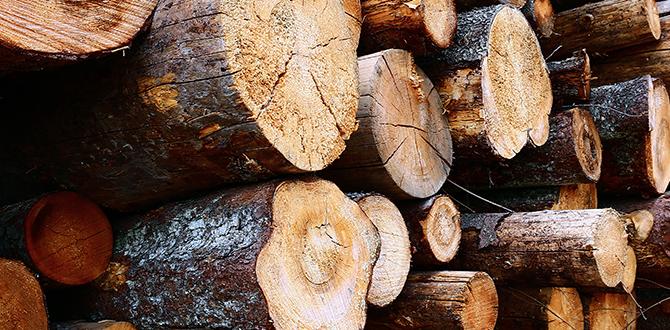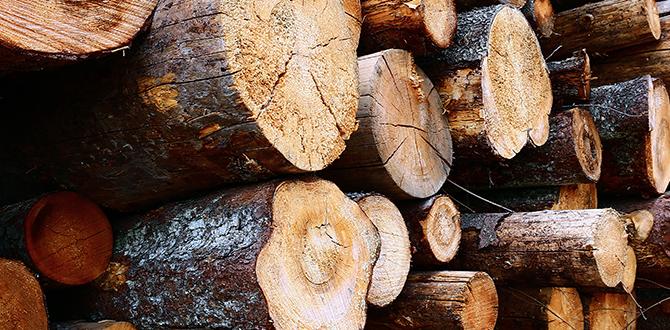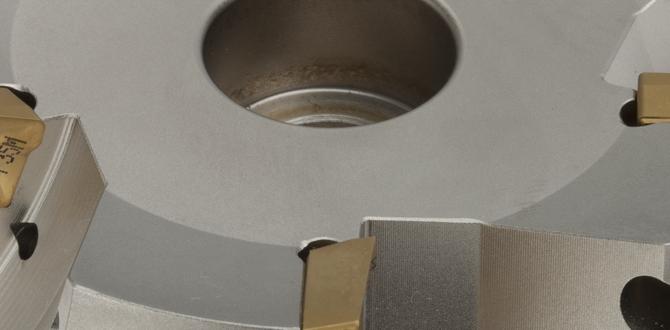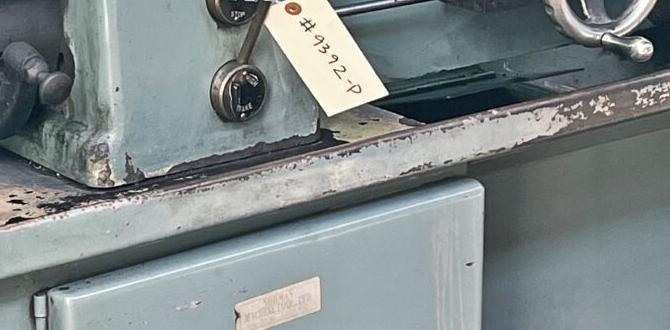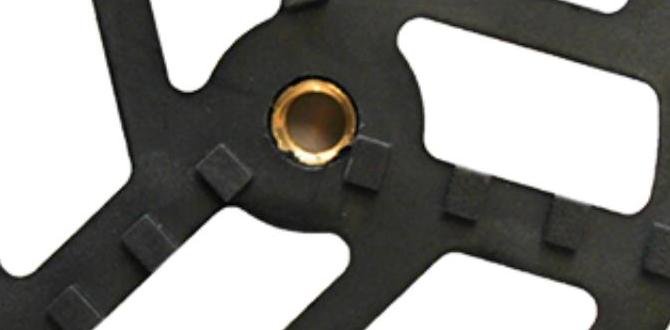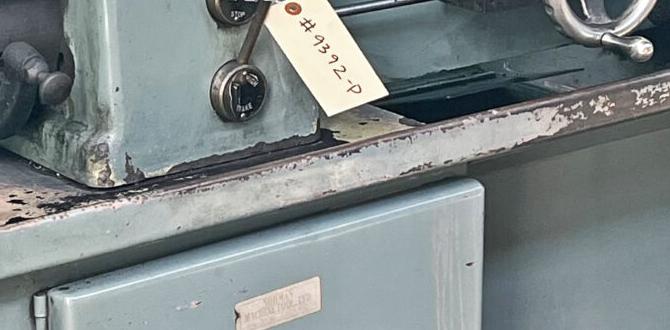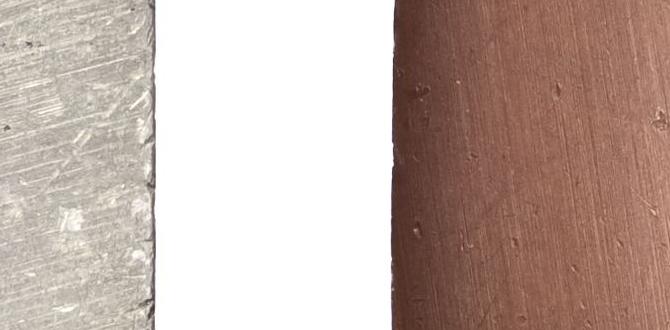Have you ever wondered how tools like milling cutters can make such precise shapes? It’s all about the balance between hardness and toughness. Hardness helps a milling cutter stay sharp longer. Toughness makes sure it doesn’t break easily under stress. But achieving the right mix isn’t simple.
Imagine you’re trying to carve a pumpkin. If your knife is too soft, it bends and goes off course. But if it’s too hard, it shatters. The same tradeoff applies to milling cutters. Engineers face this challenge daily. They need cutters that are both tough and hard, but they can’t have it all.
Did you know that some milling cutters can wear out quickly? This can lead to more downtime and extra costs. Finding the perfect balance can change everything. Let’s dive deeper into this fascinating topic and discover how hardness and toughness work together in milling cutters.
Milling Cutter Hardness And Toughness Tradeoff Explained Milling Cutters Are Essential Tools Used In Various Machining Processes, Primarily For Cutting And Shaping Materials In Manufacturing Settings. When Selecting The Right Milling Cutter, One Must Consider The Tradeoff Between Hardness And Toughness, Which Are Two Critical Material Properties That Influence The Performance, Durability, And Longevity Of These Cutting Tools. Understanding Hardness And Toughness **Hardness** Refers To A Material’S Resistance To Deformation Or Scratching. A Harder Milling Cutter Can Withstand Greater Wear, Leading To Less Frequent Replacements And Increased Productivity. However, Hardness On Its Own Is Not Enough; The Milling Cutter Must Also Exhibit Adequate **Toughness**. **Toughness** Measures A Material’S Ability To Absorb Energy And Deform Without Fracturing. A Tough Milling Cutter Is Resilient Against Shock Loads And Breakage During Machining Operations. The Challenge Lies In Achieving An Optimal Balance Between These Two Properties. The Importance Of The Tradeoff In Milling Cutters, Achieving An Ideal Balance Between Hardness And Toughness Is Crucial For Performance. While A Harder Cutter Reduces Wear And Maintains Cutting Edges For Extended Periods, It May Become More Brittle, Increasing The Risk Of Breakage Under High-Stress Conditions. Conversely, A Tougher Cutter May Wear Down More Quickly But Can Better Withstand Shocks And Varying Loads. Manufacturers Often Modify The Composition And Treatment Of Materials To Achieve Specific Hardness And Toughness Levels. For Instance, High-Speed Steel (Hss) Cutters Offer A Balance Of Hardness And Toughness, Making Them Suitable For Various Applications. Carbide Cutters, While Harder, May Sacrifice Toughness, Limiting Their Application In High-Impact Conditions. Choosing The Right Milling Cutter Considerations For Selecting A Milling Cutter Should Include: 1. **Material To Be Machined:** Softer Materials Might Benefit From Harder Cutters, While Tougher Materials May Require More Resilient Options. 2. **Machining Conditions:** High-Speed Or Heavy-Load Scenarios Often Necessitate Tougher Cutters, Even If It Means Sacrificing Some Hardness. 3. **Application Type:** Different Applications May Dictate Specific Cutting Parameters That Could Align Better With A Hardness Or Toughness-Favored Cutter. 4. **Cooling And Lubrication:** Effective Cooling Can Extend The Life Of Tougher Cutters, Making Them A Viable Option In Demanding Tasks. Conclusion The Milling Cutter Hardness And Toughness Tradeoff Is A Fundamental Concept That Manufacturers And Machinists Must Understand. By Carefully Analyzing The Specific Requirements Of Each Task, One Can Select The Right Milling Cutter That Balances Both Properties For Optimal Performance, Efficiency, And Tool Longevity.
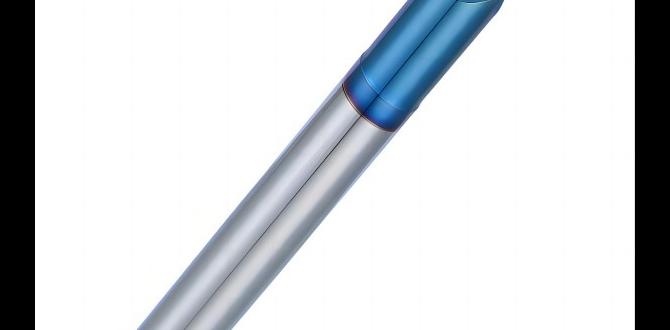
Milling Cutter Hardness and Toughness Tradeoff
Milling cutters need to strike a balance between hardness and toughness. Hardness helps them cut through tough materials. However, if they’re too hard, they can become brittle and break easily. Think about a pencil; if it’s too hard, it can snap when you press too hard. The right mix keeps cutters sharp and long-lasting. Understanding this trade-off is key for anyone using milling tools. It means better efficiency and fewer replacements. How do your tools measure up?Understanding Hardness and Toughness
Definition of hardness in relation to milling cutters. Definition of toughness and its importance in cutting tools.Hardness is how well a milling cutter can resist scratches and wear. It is very important for cutting tools because it helps them stay sharp longer. Toughness is about how well a tool can handle shocks or hits without breaking. Having toughness means the milling cutter can work in tough conditions without snapping. Both hardness and toughness are crucial for making tools that last and perform well.
What is the importance of hardness and toughness in cutting tools?
Hardness helps cutting tools last longer by resisting wear, while toughness prevents breaking during tough jobs.
Key Points:
- Hardness: Resists scratches and keeps tools sharp.
- Toughness: Handles shocks and prevents breaks.
- Both are needed for tools that last and work well.
The Role of Material Composition
Impact of different materials on hardness and toughness. Common alloys used for milling cutters and their properties.Choosing the right material for milling cutters is like picking your superhero. Each one has unique powers! Most milling cutters are made with tough alloys, balancing hardness and toughness. For instance, cobalt and tungsten carbide are popular because they resist wear and breakage. If they were in a baking contest, they would definitely win the “most durable” prize!
| Alloy Type | Hardness | Toughness |
|---|---|---|
| Tungsten Carbide | High | Medium |
| Cobalt | Medium | High |
| High-Speed Steel | Medium | Medium |
So, while some alloys are super hard, others are tough enough to bounce back. Finding the right mix makes all the difference in getting the job done!
Evaluating Toughness in Milling Cutters
Description of toughness testing techniques. The relationship between toughness and durability in machining applications.Toughness testing is crucial for milling cutters. It helps determine how well they resist breaking or chipping. Common techniques include:
- Impact testing
- Bend testing
Toughness directly relates to durability. A tougher cutter lasts longer in machining tasks. This means fewer replacements and lower costs. Remember, tougher materials help keep the work smooth and efficient.
Why is toughness important for milling cutters?
Toughness helps prevent damage during use. This ensures longer life and better performance, which saves time and money in machining processes.
The Tradeoff Between Hardness and Toughness
Factors influencing the balance between hardness and toughness. Case studies highlighting examples of tradeoff decisions in milling cutter design.Finding the right balance between hardness and toughness in milling cutters is tricky, like balancing a spoon on your nose! Hardness makes the cutter last longer, while toughness helps it resist breaking. However, pushing too hard on one can make the other suffer. For example, if a cutter is very hard, it might be brittle and snap easily. Studies have shown that by adjusting materials, designers can create better tools. It’s all about making smart choices!
| Material Type | Hardness Level | Toughness Level |
|---|---|---|
| High Carbon Steel | High | Medium |
| Cobalt Steel | Medium | High |
| Carbide | Very High | Low |
So, the next time you pick up a milling cutter, remember the fun tug-of-war between toughness and hardness is what helps get the job done!
Optimizing Milling Cutter Performance
Techniques for achieving the ideal hardnesstoughness balance. Recommendations for specific applications based on cutter performance.To get the best out of milling cutters, focus on the hardness and toughness balance. Here are some techniques to achieve this:
- Select materials that offer good strength and wear resistance.
- Adjust heat treatment processes to enhance properties.
- Keep cutter geometry sharp to reduce stress.
For specific uses, consider:
- Soft materials: Use tougher, less hard cutters.
- Hard materials: Go for harder, more wear-resistant cutters.
Finding this balance can improve performance and prolong tool life.
How can I optimize milling cutter performance?
Focus on achieving a balance between hardness and toughness. Use the right materials and tweak production methods to change properties. Choose cutters based on the material you are working with for better results.
Future Trends in Milling Cutter Technology
Emerging materials and innovations impacting hardness and toughness. Predictions on the future of milling cutter design and manufacturing.New materials are changing how milling cutters are made. Stronger and tougher options are emerging. This helps make cutting tools last longer. In the future, we may see lighter, sharper cutters. They could also use smart technology to monitor their performance. Innovations will change design methods, making them faster and more efficient. Manufacturers will need to keep up with these advancements to stay competitive.
What are the new materials in milling cutter design?
Innovative materials like ceramic and carbide are being used. These materials can handle more pressure and heat, improving cutter performance.
Future features of milling cutters:
- Lighter weight for easier handling.
- Smart sensors to track wear and tear.
- Eco-friendly production to protect the environment.
Best Practices for Selecting Milling Cutters
Guidelines for choosing the right cutter based on hardness and toughness needs. Tips for maintaining milling cutters to ensure longevity and performance.Selecting the right milling cutter is key for good results. Consider the balance between hardness and toughness. Harder cutters last longer, but may chip. Tougher ones resist breaking but wear out faster. Follow these tips:
- Choose a cutter based on the material you work with.
- Check the cutter’s hardness rating for your specific tasks.
- Sharpen cutters regularly to maintain performance.
- Store them properly to avoid damage.
Following these practices keeps your milling cutters effective and durable.
How do I choose the right milling cutter?
The best way to pick a milling cutter is to match its hardness to your project needs. Hard cutters are great for tough materials, while tougher cutters suit softer materials.
Conclusion
In conclusion, milling cutter hardness and toughness often trade off against each other. Harder cutters resist wear but can be brittle. Tough cutters withstand impact but may wear down faster. You should choose the right balance based on your projects. To learn more, explore resources on milling tools and experiment with different cutters. Your hands-on experience will deepen your understanding!FAQs
Here Are Five Related Questions On The Topic Of Milling Cutter Hardness And Toughness Tradeoff:Milling cutters are tools used to shape materials like metal. Hardness means the tool can cut tough materials without wearing out. Toughness means the tool can handle impacts and won’t break easily. Sometimes, a cutter can be very hard but not tough, which makes it more likely to crack. We need to find a balance between hardness and toughness for the best results.
Sure! Please ask your question, and I’ll provide a short answer that fits your needs.
What Are The Key Differences Between Hardness And Toughness In Milling Cutter Materials, And How Do These Properties Affect Cutting Performance?Hardness means a material can resist scratches and wear. Toughness is about how well a material can absorb shock and not break. In milling, hard materials cut smoothly, but they can crack easily. Tough materials might wear out faster but can handle bumps better. Together, these properties help tools cut better and last longer.
How Does The Hardness Of A Milling Cutter Influence Its Wear Resistance And Overall Lifespan During Machining Operations?The hardness of a milling cutter is really important. Harder cutters resist wear better, which means they last longer. When you use a hard cutter, it can cut through materials without getting dull quickly. This helps you finish your work faster and saves you money because you won’t need to replace the cutter as often. So, using a hard milling cutter can help you get more done in less time!
In What Scenarios Would A Machinist Prioritize Toughness Over Hardness When Selecting A Milling Cutter For Specific Materials Or Applications?Sometimes, you need a milling cutter that can handle tough jobs without breaking. If you’re cutting soft metals or materials that are easy to chip, toughness is more important. This means the cutter can bend a little without cracking. We choose toughness when we’re working with materials that might push the cutter hard or when we need it to last longer.
What Are The Typical Materials Used For Manufacturing Milling Cutters, And How Do Their Hardness And Toughness Characteristics Compare?Milling cutters are usually made from high-speed steel or carbide. High-speed steel is strong but not as hard as carbide. Carbide is super hard, which helps it cut better, but it’s also more brittle. This means it can break if you drop it. Overall, carbide is great for tough jobs, while high-speed steel works well for lighter work.
How Can The Tradeoff Between Hardness And Toughness Be Optimized In The Design Of Milling Cutters To Enhance Machining Efficiency And Reduce Tool Failure?To make milling cutters better, we can find the right balance between hardness and toughness. Hardness helps the cutter stay sharp longer. Toughness makes it less likely to break. We can choose special materials that combine both qualities. This way, we get tools that work well and last longer, which improves our machining and reduces tool failures.

